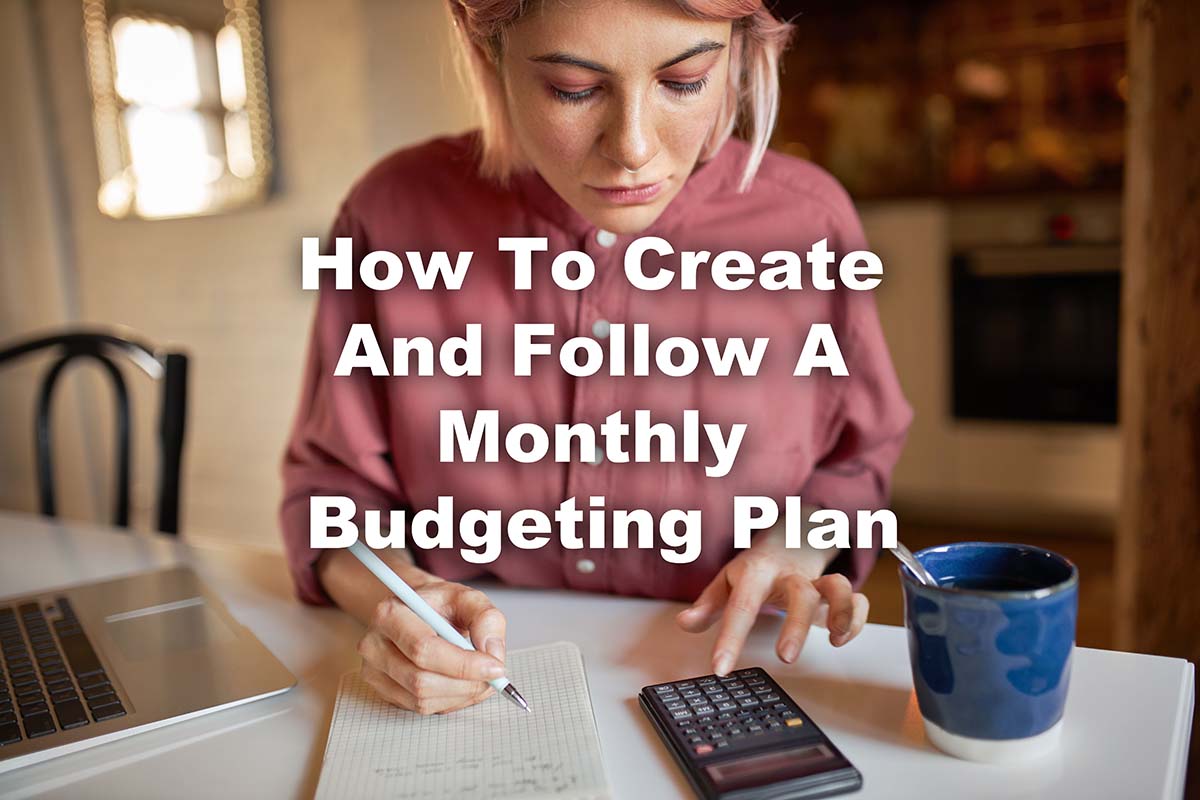
How To Create And Follow A Monthly Budgeting Plan
For most working-class Americans, a monthly budgeting plan is the first step toward greater financial stability and freedom. This is more than just knowing how much you’re making and spending – it’s knowing your spending habits inside and out and working to improve them. Creating a monthly budgeting plan takes a bit of effort, but the benefits could exponentially improve your financial state. This guide will help you create and follow your monthly budget in six steps.
Use These Tips To Create A Monthly Budget
1. Track Your Budget Digitally
While pen and paper can be handy for a lot of things, financial tracking isn’t one of them. The days of balancing a checkbook by hand are over and the digital age has brought some incredible financial resources to the table. Familiarize yourself with Excel or another electronic spreadsheet or, better yet, download a free budgeting app like Mint, Goodbudget, or EveryDollar.
Even having your monthly budgeting plan on your phone will let you track expenses as they happen, so you can make sure that none slip your mind. And if you do want to stick to pen and paper, just make sure you write down all of your expenses into categories of wants and needs and split your income for these categories. Once you have selected your budgeting tool, it’s time to home in on the financial details.
2. Note Your Income
The next thing you need to include in your monthly budgeting plan is noting your income that you can allocate to your spending. First, note your expected income on your budget. If you freelance or work independently, you can use your average income over the last six months as your estimate. As the month progresses, note any additional income you receive; yes, even gifts, bonuses, and that tax refund.

3. Choose Your Spending Categories
Writing out your expected expenses for the month is also important to have in your budgeting plan. These should be placed within a few categories, including housing, transportation, food, utilities, insurance, healthcare, savings/debt repayment, and personal spending. Almost every individual will have all of these expenses every month, and you may or may not have additional categories.
Many people on a monthly budgeting plan struggle to decide if they should save or pay down their debt. Generally speaking, it may be wise to pay down high-interest debt first. If your debt is low- or no-interest, then you could evenly split repayments and savings. Savings can include building your emergency fund, investing, and retirement accounts. The personal spending category could be for things like eating out with friends, shopping, or going on vacation that need to be monitored.
4. Monitor Your Spending
As the month progresses, track your spending carefully and regularly. Most people will be surprised at how much they may go over the personal spending category, but this is where the budget comes into play to help. In fact, you can’t manage a budget if you don’t know how much you are spending in the first place. The more consistently you’re tracking your spending, the more likely it is you will stick to your budget. Of course, you can make slight adjustments as necessary.
5. Consider Cash
Now we’ve moved on to potentially the hardest part – sticking to your budget. One of the best ways to make sure you don’t go over budget is by paying with cash as often as possible, especially for the personal spending category. If you can take out your personal spending money for the month early on, the visual representation of how much is left will help you make better financial decisions as the weeks pass.

6. Be Prepared
Your first month’s budget probably won’t go according to plan. There are plenty of expenses that occur right under our noses and throw budgets off course. The important thing is that we adapt and move forward regardless. If you are still working on an emergency fund – which should be a part of your savings category – you may not be financially prepared for an unexpected bill or emergency. In cases like these, you could consider a payday advance payment as a temporary help.
When A Payday Advance Can Help
A payday advance payment by Cash Cow can put between $100 and $300 into your account to deal with emergency expenses. You can use this to cover medical bills, car or home repairs, replacement appliances, emergency travel, or other urgencies. To qualify, you’ll only need your ID, recent pay stub, and a check from your bank account.
Simply give your nearest Cash Cow a call or use the general inquiry form on our website to connect with us. For the latter, we will call you to answer questions and explain the process. Most payday advances are repaid when your next paycheck comes in from work, so you can deal with your emergencies and get back to working on your budget in no time at all.
It’s Time To Get Financially Fit!
A monthly budgeting plan is the backbone of a financially fit life. If you are pursuing financial freedom or just want to stop living paycheck to paycheck, it starts by monitoring your income and spending to a T. Of course, you may hit a road bump along the way with a financial emergency. In these cases, Cash Cow is here to help with a payday advance payment. Reach out to us today to learn more – we are excited to help you on your path to financial fitness!
Note: The content provided in this article is only for informational purposes, and you should contact your financial advisor about your specific financial situation.
